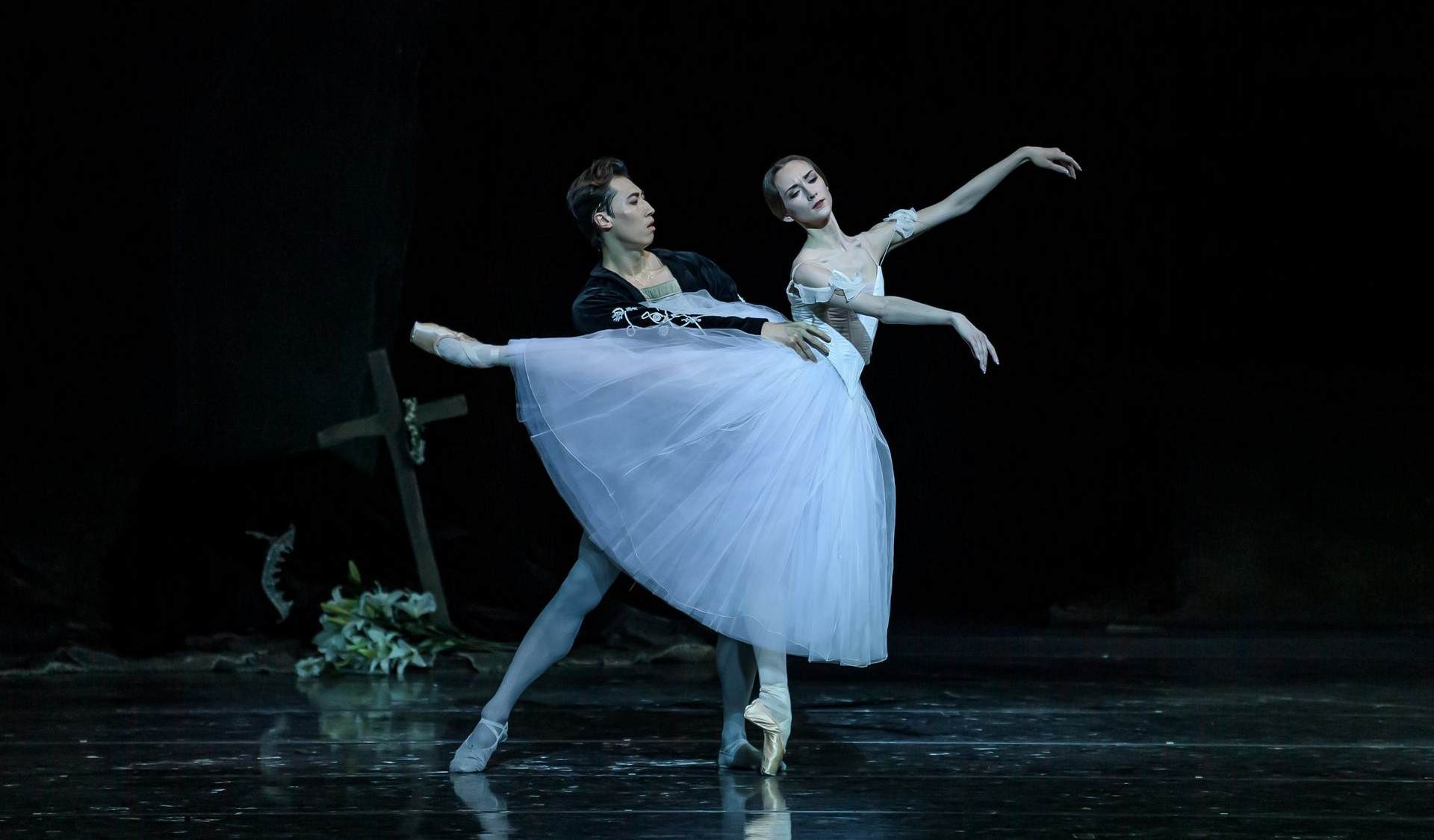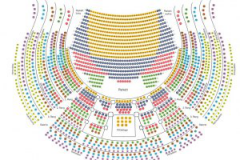Giselle
Mo | Tu | We | Th | Fr | Sa | Su |
Ballet phantastique in two acts – 1841 / 1974
recommended for ages 8 and older
1. Act
Duke Albrecht leaves his castle for a village where he hides his sword and his cloak in a hut so as to conceal his noble origins. He has fallen in love with Giselle, a young peasant girl who believes he too is of peasant stock and that his name is Loys.
Giselle’s mother Berthe hopes that her daughter will marry the forester Hilarion who loves her with all his heart. Hilarion interposes himself between Loys and Giselle, reminding Giselle that she is betrothed to him and warning her against Loys. Giselle however trusts Loys (Albrecht) and refuses to listen to Hilarion’s reproaches although she knows that her mother too dislikes Loys. Giselle goes off happily to the harvest festival. Far off in the distance hunting horns can be heard. Wilfried, Albrecht’s trusted friend, hurries to the scene and warns the Duke of the approaching hunt. Hilarion observes them both and once they have left he enters the hut in which the sword and cloak had been concealed and thus discovers Loys’ aristocratic origins. The hunt appears, led by the Duke of Kurland and his daughter Bathilde who is so delighted by the beauty of the peasant girl that she gives her a necklace. Berthe invites the guests into the house. The Duke of Kurland hangs his hunting horn in the doorway. Hilarion compares the arms on the Dukes’s horn with those on the sword of Loys and thus discovers his secret. At the height of the harvest festival Hilarion reveals to all those present that Loys is really Duke Albrecht in disguise. At first Giselle refuses to believe Hilarion but when Bathilde introduces Albrecht as her fiancé Giselle suffers a shock, with the balance of her mind disturbed she relives her love for Albrecht once again, takes his sword and kills herself.
2. Act
Hilarion is keeping vigil over Giselle’s grave situated in unconsecrated ground in the forest near a lake. It is midnight, the hour of the Wilis, that is the ghosts of those young maidens who have been jilted by their betrothed and who have died before their wedding. Now they take their revenge on all the men who stray into their nocturnal sphere by forcing them to dance until death. Myrtha, their Queen, appears and summons the Wilis. Giselle is then called forth from her grave to be initiated as a new Wili. Albrecht enters the clearing, places flowers on Giselle’s grave and sees her in a vision. The Wilis pursue Hilarion and force him to dance until he is exhausted. Hilarion throws himself into a lake and drowns. Albrecht is to be the next victim. Giselle attempts to bring him into the area protected by the cross on her grave but Myrtha’s power is greater. Albrecht is compelled to dance. Giselle wants to come to his assistance but gradually Albrecht’s strength begins to fail. Just as he believes he is lost, day begins to dawn. The nocturnal power of the Wilis wanes; the ghosts of the young maidens disappear. Albrecht has been saved. Giselle bids him farewell and he is left alone, deeply moved.
Program and cast
Choreography Peter Wright, Jean Coralli, Jules Perrot, Marius Petipa. Music Adolphe Adam.
Duration approximately 2 hours and 7 minutes.
Music: Adolphe Adam
Prop Design: Peter Farmer
Conductor: Andrea Quinn
Giselle: N.N.
Albrecht, Herzog in Franken: N.N.
Hilarion: N.N.
Berthe, Giselles Mutter: N.N.
Herzog von Kurland: N.N.
Bathilde, seine Tochter: N.N.
Myrtha: N.N.
Moyna: N.N.
Zulme: N.N.
Ensemble of the Bayerisches Staatsballett
Bayerisches Staatsorchester
National Theatre Munich
The National Theatre Munich (German: Nationaltheater München) is an opera house in Max-Joseph-Platz in Munich, Germany. It is the home of the Bavarian State Opera and the Bayerisches Staatsballett(Bavarian State Ballet).
The Bavarian State Opera also performs in the Prinzregententheater, which opened in 1901 and, like the Bayreuth Festspielhaus, is built to Richard Wagner's specifications, and in the Cuvilliés Theatre at the Residenz, constructed in 1751–1753 and described by Thierry Beauvert as "a Rococo gem".
The Nationaltheater is very easy to get to both by car and by MVV public transportation.
By MVV public transportation
S-Bahn: S 1 - 8 Marienplatz
U-Bahn: U 3, 6 Marienplatz, U 3 - 6 Odeonsplatz
Bus: 52, 131 Marienplatz, 100 Odeonsplatz
Straßenbahn: 19 Nationaltheater
On the day of the performance, holders of regular tickets are entitled to use public transport provided by the Münchner Verkehrsverbund (MVV). This service starts at 3 pm respectively three hours before the performance commences and ends with the closing hour of the MVV.
By Car
Take the Altstadt-Ring to Maximilianstraße.
Parking garage Max-Joseph-Platz: open Monday to Sunday from 6:00 A.M. to 2:00 A.M.
You can take advantage of the special theatre parking fee of Euro 10,- from 6:00 P.M. to 8:00 A.M. by presenting your admission tickets.

 EN
EN DE
DE IT
IT FR
FR ES
ES RU
RU JP
JP RO
RO
 Seating plan
Seating plan 